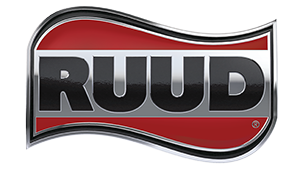Building a new home is an exciting venture, but it requires careful planning, especially when it comes to heating installation. A well-designed and properly installed heating system ensures comfort, efficiency, and long-term savings. By paying attention to key elements during the planning and installation stages, you can avoid costly furnace repair and maximize the performance of your heating system.
Planning for Efficient Heating Installation
Planning is the first crucial step toward ensuring efficient heating installation in your new construction. Setting the foundation correctly helps avoid future problems and additional furnace repair costs. Here are key considerations during the planning phase:
1. Load Calculation: Conduct a thorough load calculation to determine the heating requirements of your new home. This calculation takes into account the size of the house, insulation levels, number of windows, and other factors. Our professionals can perform an accurate load calculation to ensure you choose the right system capacity.
2. Ductwork Design: Properly designed ductwork is essential for efficient heating. Ensure the ductwork layout minimizes heat loss and allows for even distribution of warm air throughout your home. Seals and insulation are vital to prevent air leaks, which can decrease system efficiency and increase heating costs.
3. Energy Efficiency Goals: Set clear goals for energy efficiency during the planning stage. Choose energy-efficient materials and systems that align with your objectives. Consider factors like AFUE ratings for furnaces and the overall thermal performance of your home.
Choosing the Right Heating System for New Constructions
Selecting the right heating system is critical to the success of your new home’s overall heating installation. The right choice can lead to improved efficiency, lower costs, and greater comfort. Follow these steps to make an informed decision:
1. Understand Different Types of Heating Systems:
- Furnaces: Furnaces are popular for their reliability and efficiency. They come in various fuel types, including natural gas, oil, and electric. Natural gas furnaces often offer the best balance between cost and efficiency.
- Heat Pumps: These systems provide both heating and cooling, making them versatile for varying climates. They are known for being energy-efficient and environmentally friendly.
- Boilers: Boilers use water to distribute heat and are typically more efficient than forced-air systems. They are well-suited for homes with radiant floor heating.
2. Consider Your Home’s Specific Needs: Each home has unique requirements based on its design, insulation, and climate. Assess your new construction’s specific needs to choose a system that meets them effectively. Our professionals can offer guidance based on a comprehensive assessment.
3. Evaluate Long-Term Costs and Benefits: Consider the total cost of ownership, including initial installation, maintenance, and potential heating repair costs. Energy-efficient systems might have a higher upfront cost but can result in significant savings over time.
4. Seek Professional Advice: Consulting with our technicians can provide invaluable insights into the best heating solution for your home. Our experts can help you weigh the pros and cons of different systems, ensuring you make an informed decision.
Key Installation Practices for Optimal Efficiency
Ensuring optimal efficiency during heating installation is crucial for the long-term performance of your system. Proper installation practices can prevent the need for future heating repair and contribute significantly to energy savings. Here are some essential practices to follow:
1. Correct Sizing and Placement: Correctly sizing your heating system is vital for efficient operation. An undersized system will struggle to heat your home effectively, while an oversized system can cycle on and off frequently, reducing efficiency. Our professionals perform precise calculations to ensure the right system size. Additionally, strategic placement of your furnace or heating unit can prevent heat loss and ensure even distribution of warm air.
2. Proper Sealing and Insulation: Ensure all ductwork is properly sealed and insulated to prevent heat loss. Leaky ducts can significantly reduce the efficiency of your heating system, leading to higher energy bills and uneven heating. Using high-quality materials for sealing and insulation is a must.
3. Professional Installation: Hiring our experienced technicians for your heating installation guarantees that all components are installed correctly. Properly connected systems, accurate adjustments, and adherence to manufacturer guidelines ensure your system operates at peak efficiency.
Maintaining Your New Heating System Post-Installation
Maintaining your heating system after installation is essential for preserving its efficiency and extending its lifespan. Regular maintenance helps avoid unexpected breakdowns and the need for heating replacement. Here are some important maintenance steps:
1. Regular Inspections: Schedule regular inspections by our professionals. Routine checks can identify potential issues early, preventing costly repairs and ensuring your system runs smoothly. Our technicians will examine components, clean any buildup, and make necessary adjustments.
2. Filter Replacement: Change the air filters regularly, as dirty filters can obstruct airflow, reduce efficiency, and strain your system. A clean filter ensures better air quality and helps your heating system operate efficiently.
3. Monitor System Performance: Keep an eye on your heating system’s performance. Unusual noises, uneven heating, or unexpected increases in energy bills may indicate issues that need attention. Promptly addressing these signs can prevent further damage and costly repairs.
4. Annual Professional Maintenance: Schedule annual maintenance with our technicians to keep your heating system in top condition. They will perform a thorough inspection, clean critical components, and make any necessary adjustments to ensure optimal performance.
Conclusion
Efficient heating installation and maintenance are vital for ensuring comfort and energy savings in your new construction. By focusing on careful planning, selecting the right heating system, following best installation practices, and maintaining your system post-installation, you can enjoy a warm and comfortable living environment without the worry of frequent repairs or replacements.
At Pacific Heating, we are committed to providing top-notch heating installation in Atascadero. Whether you need furnace installation, heating repair, or maintenance, our skilled technicians are here to help. Contact us today to schedule a consultation and ensure your new home’s heating system is installed and maintained to the highest standards!









